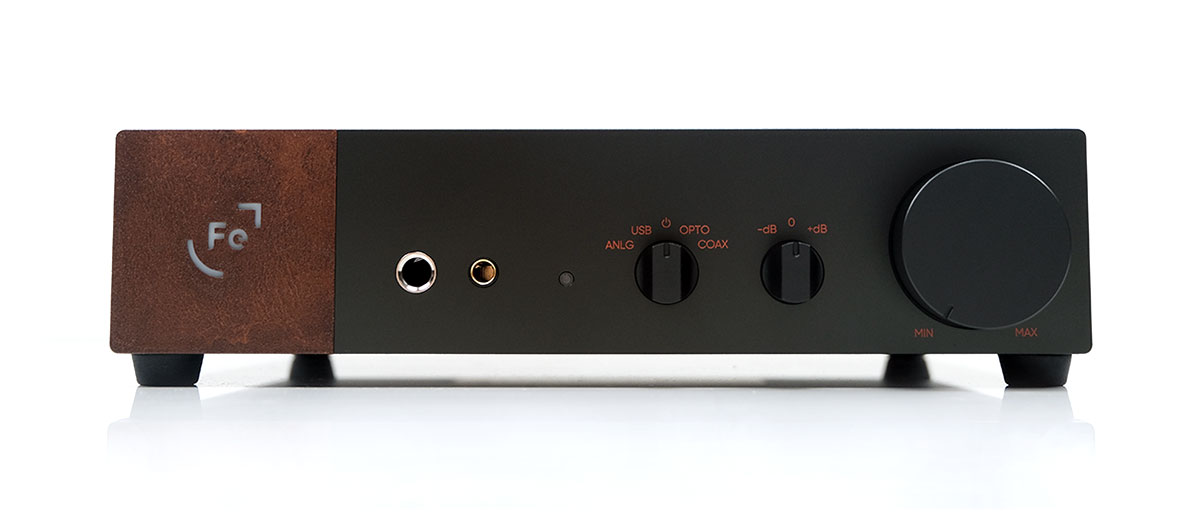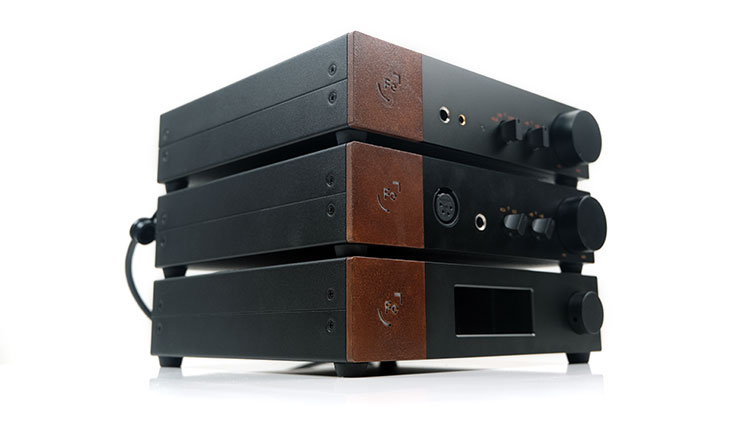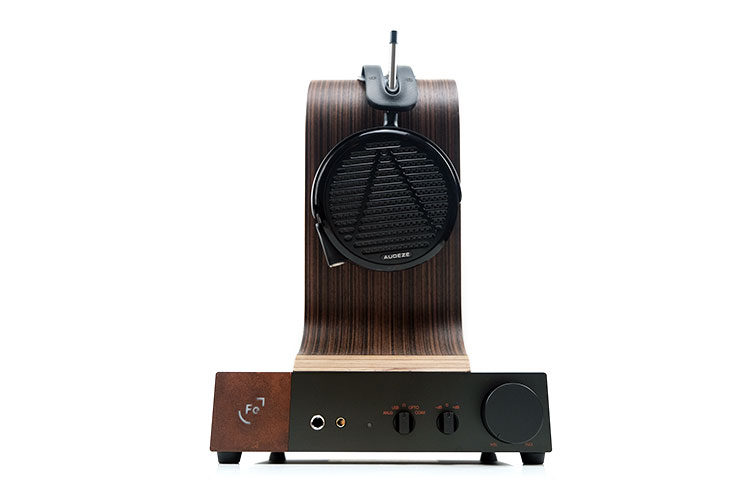Sound Impressions
The following sound impressions were completed with and without the HYPSOS connected to the ERCO using the Audeze LCD-5, DCA Stealth, and the T+A Solitaire P headphone pairings.
Summary
The ERCO delivers an impressively clean and balanced sound signature that is not a million miles away from the OOR if it had a natural-sounding DAC connected behind it.
This is not a dead neutral or dry sound, however. I would say with some pairings such as the DCA Stealth it veers to the slightly smoother side of neutral with a little bit of warmth in its upper bass
Compared to the OOR, there is a slightly enhanced level of bloom coming into the lower mids. Going balanced tightens the bass up for me and enhances the physicality of the performance.
With the transparent and accurate-sounding OOR, I always felt it to be incredibly neutral to the point where I would be chopping and changing DACs to find a pairing that upped the bass warmth levels appreciably.
However, with the ERCO internal DAC/amp, the punch from the bass and the slightly smoother and fuller lower mids quite suited the likes of the LCD-5, for example.
And that, for me, is where I found the ERCO to excel in our pairings, a nice sense of ‘drive’ and attack on its low-end. Not a weighty amplifier like the Violectric V590 for example, but punchy and engaging.
There are some nuanced tuning areas from the ERCO that you will start to notice with peakier headphones such as the Solitaire P. The treble has a slight edge to it that can sometimes emphasize some sibilance in higher-pitching vocals that the ERCO DAC combined with the OOR keeps a firmer lid on.
That would suggest the proprietary IC amplifier is more the culprit here than the DAC. Then again, should you find it that surprising given the OOR discrete topology is almost the same price as the ERCO alone? Possibly not.
Timbre
The ERCO timbre is generally very articulate, attack-minded, and not laid back but with a natural to neutral tone overall rather than an overly analytical sound signature.
Going single-ended there is a very slight bloom in the upper bass to lower mids and also a little bit of treble sparkle that can bleed into the vocals of headphones with an elevated 5-7k range.
I would still call it a balanced tuning, nothing with too much glare but not too rounded or thin-sounding either. One of the banes of older Sabre DACs was that glare or glassy tone to percussion timbre with revealing headphones such as the HD800.
The ERCO offers a more finely tuned and coherent treble performance that only marginally pushes into edginess with peaky-sounding headphones as described in our summary above. One suggestion I would offer is to pair it with HYPSOS and drop the Sweet Spot Tuning (SST) Voltage level down from 24V to 22V to create a slightly softer tone.
Going balanced, the ERCO delivers better bass physicality and dynamics with a better dampening of the treble so, to my ear, it sounds a little sweeter in the mids timbre. You also get a solid level of PRaT with headphones such as the LCD-5 so depth and power for me are quite satisfying with the ERCO.
But there is one more level, the HYPSOS, and here you get a more realistic tone and an improved performance in terms of dynamic range to go along with it.
Staging
The ERCO is excellent in terms of imaging accuracy with just a slight diminution in terms of dynamics when choosing SE over its balanced option. You could argue it has a degree of intimacy with its single-ended output but compared to balanced I just find it a little on the polite side for dynamic range.
Using the ERCO’s balanced output, the channel separation is wider with improved instrumental clarity. The bass is tighter and more impactful with better depth when going with balanced also. I am actually quite impressed by the punch and weight of the ERCO and would class its depth as somewhat closer to the V590 than the bass polite Hugo TT2 staging quality.
There is also some nice immediacy and intricacy to the midrange instrumental placement, particularly female vocals which shone through quite nicely with the Solitaire P and the Stealth. In particular, the Stealth’s 2-5k range sounded very clear with an excellent harmonic balance to go along with it.
However, like the OOR, the ERCO does not have a grandiose soundstage quality, being more rounded than expansive. Like its amplifier sibling, it’s more about the clarity of the imaging, particularly with HYPSOS attached or using its own balanced output.
HYPSOS Factor
A quick technical note on the HYPSOS pairing. Make sure you update ERCO to firmware V1.5 and reconfigure the unit to match the new power rating option in the manual configuration on the HYPSOS. You will not find the ERCO line entry in the previous firmware updates.
Everything I said about the change the HYPSOS brought to the OOR applies here also to the ERCO. In a nutshell, the HYSPOS/ERCO combo sounds a lot more confident. You get an improved level of dynamic range, a lot more gusto in its bass attack and slam, and a more expansive staging element to go along with it.
Without it, the ERCO staging sounds slightly diminished and imaging, whilst still very accurate, doesn’t sound as incisive or simply does not resonate quite as well without HYPSOS attached.
I still hear everything though. It is not as if the detail vanishes but rather ERCO alone is not as vivid nor does it quite convey the same level of dynamics leading to a more intimate staging quality.
If you are planning to bring the ERCO into an ecosystem that already uses the HYPSOS then it is a good move. I do believe Ferrum sells a splitter DC coupler that will allow you to connect both the OOR and ERCO at the same time though not power them simultaneously. Probably a wise low-cost investment.
Synergy
Flexibility
The ERCO is rated at up to 6.1W into a 50Ω load balanced and 1.7W unbalanced on the same load. Whilst not quite OOR 8W levels it is still a huge amount of grunt for demanding headphones such as the T+A Solitaire P, DCA’s Stealth, and more than enough for modern easy to driver planars like the Audeze LCD-5.
Even going up to 300Ω balanced will still give you up to 1.2W of output power which makes it a good potential pairing for the HD800 or the lower Sennheiser models such as the HD600/HD650.
You have plenty of power on tap but with an output impedance of < 0.3 Ω the ERRCO is no blunt hammer either. It is deft enough to handle medium to low efficiency IEMs such as the VE EXT with excellent low volume channel balancing from its Alps potentiometer.
Like the OOR though it is not quite silent enough to handle the really sensitive monitors, especially if you have a preference for going balanced. Paired with the likes of the Andromeda 2020, Odin, and the VE Phonix there was a bit of background hiss from the 4.4mm output which might not be ideal for very quiet passages of music playback.
Still, a sub-ohm output impedance value and plenty of wiggle-room from the pot on low gain makes IEMs like this perfectly pairable with the ERCO for consumer pop and rock.
Pairings
Given its relatively neutral performance and excellent power handling, the ERCO is a very flexible pairing partner for a wide range of headphones. The dynamic range and clarity are excellent with the likes of the Audeze LCD-5, DCA Stealth, and the T+A Solitaire P. All 3 sounded properly driven using the ERCO’s balanced output.
Bass Gusto
A note on the Stealth bass performance with the ERCO, it is better than I expected it to be and certainly punchier than the Hugo TT2 performance. It does not convey quite the same wall of detail as the TT2 but its bass punch is more palatable with a nice sense of rhythm with pop and R’n’B standards.
The mids and treble harmonic balance were outstanding also with the Stealth with very little in the way of sharp overtones or distracting harmonic dissonance. DCA has tuned the top-end of the Stealth was a natural fade the gels very well indeed with the ERCO’s clear and focused treble tuning.
I actually thought the LCD-5 ERCO pairing was a little more agreeable than when I first tested it with the OOR. I suspect that the slightly softer lower-mids coloring combined with that nice punchy bass performance suits it better than the hyper-transparent OOR presentation.
DACs do play a big role here and I did find the OOR with a very neutral source such as the DX300 MAX or the Gustard X16 a bit lifeless whereas a Holo Audio Spring DAC 2 or a Little Dot DAC VII brought out a more playful and engaging character in the LCD-5 pairing.
The ERCO DAC definitely has a bit more gusto than either the iBasso or Gustard though a bit behind the DAC VII for sheer physicality. Certainly, it leaves me less likely to reach for any sub-1k elevated PMEQ on the LCD-5.
Treble Subtleties
That being said, the ERCO does have some nuanced treble subtleties when compared to the OOR/HYPSOS performance using the internal DAC that you can detect on some of our other tested headphone pairings.
One area that stood out for me was the level of refinement from the treble performance with headphones that had a feistier 5-7k peak or an extended lower treble presence such as the Solitaire P you can pick up a little more edginess in its delivery compared to the OOR with the ERCO DAC.
With the OOR using the ERCO DAC, leading edges and attacks broke beautifully using the Solitaire P with sibilance kept well under control. Slightly less so with the ERCO DAC. Not that the ERCO is a bright headphones amplifier but rather the OOR just seems a bit more refined in how it handles sibilance.





